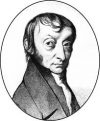1.1 Particulate nature of matter and chemical change
Pure Substance:
Pure substance has only one type of particles.
Example: Elements and Compounds
Elements: It is a pure substance which contains only one type of atoms. Example: Hydrogen, oxygen, Iron, Mercury etc.
There are about 118 elements recognized by IUPAC so far.
about 85% elements are Metals, rest non-metals and semi-metals.
Compound and Law of definite proportions:
According to this law Atoms combine in definite ratio thus compound have definite proportion of atoms irrespective of the source of the compound.
Example Water,H2O has 11.11% Hydrogen no matter what ever is the source of water.
In other words, hydrogen and oxygen has mass in the ratio of 1 : 8 irrespective the source of water.
Impure substance has two or more than two types of substances. Example: Mixtures
The Mixture: The Mixture is the physical combination of two or more types of substances. Example: Air is a mixture of gases, dust particles and water vapour.
Types of Mixtures
Homogeneous Mixture:
Homo means equal, thus such mixture contains equal distribution of particles. We cannot see particles of such mixture by naked eyes. All solutions are Homogeneous mixtures.
Example : Acid solutions, Salt solution etc
What is a solution?
Solution is a combination of solute and solvent.
Solute: substance with smaller amount in a solution.
Solvent: substance with larger amount in a solution.
Example: If Sulphuric acid is dissolved in water, sulphuric acid is a solute and water is a solvent.
Heterogeneous Mixture:
Hetero means unequal, such mixture contain unequal distribution of particles and we can see the particles either by naked eyes or microscope.
Example: colloid and suspension
1.1 PARTICULATE NATURE OF MATTER AND CHEMICAL CHANGE
Matter :
Anything which occupy space and has a mass is called matter.
Example:
Air, Water, Oil, wood , Iron etc
Types of matter:
matter is basically of three types:
Solid:
Particles are held very close to each other in solids in a regular order and there is very little freedom of movement due to strong attractive forces between particles.
As a result, Solids have definite volume and definite shape.
Question: Write few examples of solids.
Challenge: Is Clay solid or liquid? Why is it solid or liquid?
Liquid:
Particles are close to each other but they can move around due to weaker attractive forces between particles compared to solid particles.
As a result, Liquids have definite volume but do not have definite shape. They acquire the shape of the container in which they are kept.
Question: Name 5 liquids. Is toothpaste a liquid?
Gas :
Particles are far apart their movement is easy and fast due to negligible attractive forces between particles. Gases have neither definite volume nor definite shape. They completely occupy the space in the container in which they are placed.
Question: Name 5 gases.
Challenge: Is gas or vapour same?
Why or why not?
Inter-conversion of States of matter:
The states of matter are inter-convertible by changing the conditions of temperature and pressure.
On heating, a solid usually changes to a liquid, and the liquid on further heating changes to gas or vapour.
In the reverse process, a gas on cooling liquifies to a liquid and the liquid on further cooling freezes to the solid.
Sublimation: Sublimation is the change of solid state in to gaseous state without changing in to liquid. For example: Camphor, Ammonium chloride, Naphthaline.
Deposition: Deposition is the change of gaseous state into solid state. For Example gas deposition on water.
Matter is made up of tiny particles called Atoms.
Atoms of same elements are same while atoms of different elements are different however discovery of Isotopes and Isobars proved him Wrong.
Isotope: Atoms of same elements with different number of neutrons or mass number.
Example of Isotopes: Hydrogen has three isotopes, Protium( H-1), Deuterium(H-2) and Tritium( H-3).
Carbon has C-12, C-13 And C-14.
Atoms combine in fixed ratios to form compounds.
Atoms can neither be created nor destroyed. Latest discoveries proved that new elements can be created by nuclear reactions.
What is a chemical Equation?
Symbolic representation of a chemical reaction is called a chemical equation.
For example to represent the chemical reaction between Sodium metal and oxygen, the following equation is represented.
Na + O2 —–> Na2O
What is a balanced chemical equation?
The chemical equation which has equal number of atoms on left hand side (reactant) and right hand side (product), is called a balanced chemical equation.
In the above equation, the number of atoms is not equal on left and right sides. So we should balance the above equation.
It is to be noted that we cannot change the formula of molecules of elements and compounds to balance. We can only use the number of moles in the front of reactants and products.
Balancing of equation
Step 1.
Atom of Sodium on left side is 1 while right is 2 so we should equal the number. 2 Na + O2 —–> Na2O
Step 2.
Atom of oxygen on left side is 2 while on right is 1 so we should equal this number by dividing the oxygen mole by 2 on left side.
2 Na + 1/2O2 —–> Na2O
Step 3.
Lastly the states symbols should be assigned to reactants and products. Sodium is a solid metal at room temperature, Oxygen is a gas while sodium oxide is a white solid.
2 Na(s) + 1/2O2(g) —–> Na2O(s)
State symbols in Chemical Equations are very key to get marks in IB diploma exams. It is not difficult to use state symbols in chemical equations.
What are state symbols?
State symbols are symbols used to represent the physical state of reactants and products in a chemical equation.
Example:
White solid magnesium Oxide is formed when Magnesium metal ribbon is burned in air( oxygen gas).
2Mg(s) + O2(g)—> 2MgO(S)
Try to write the state symbols of the following equationsON 1.1 PARTICULATE NATURE OF MATTER:
Ag+ + X− → AgX(s)
Na2O + H2O → 2NaOH
MgO + H2O → Mg(OH)2
Li2O(s) + 2HCl → 2LiCl + H2O
MgO + 2HCl → MgCl2 + H2O
P4O10+ 6 H2O→ 4H3PO4
I hope by now you have become familiar with subtopic 1.1 Particulate nature of matter and chemical change

